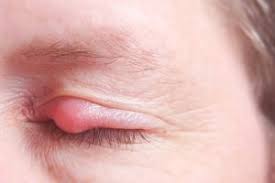As the stye grows, the eyelid becomes swollen and painful, and the eye may water.
Most styes swell for about 3 days before they break open and drain.
Styes usually heal in about a week.
A chalazion starts as a firm lump or cyst under the skin of the eyelid.
Unlike styes, chalazia often don't hurt.
Chalazia grow more slowly than styes. If a chalazion gets large enough, it may affect your vision.
The inflammation and swelling may spread to the area surrounding the eye.
Chalazia often go away in a few months without treatment.



 Contact Us
Contact Us







 Hospitals
Hospitals
 Doctors
Doctors
 Diagnostic
Diagnostic
 Pharmacy
Pharmacy
 Health Tips
Health Tips
 Blog
Blog

























Comments